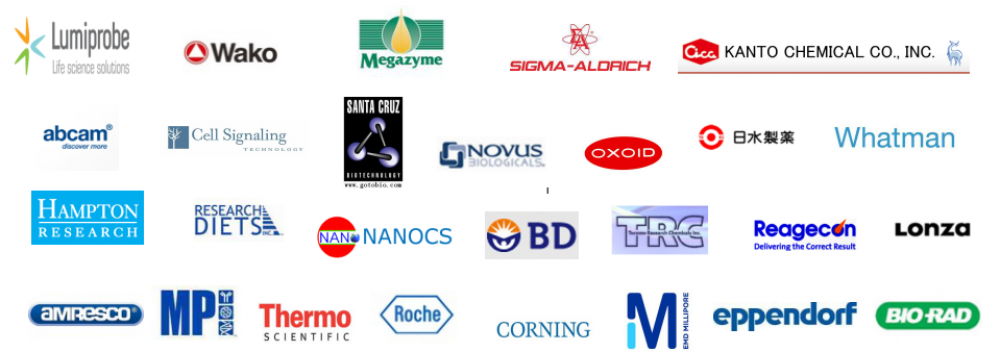乳酪业检测 MILK AND DAIRY
Test Kits for Milk and Dairy Analysis
Enzymatic bio-analysis plays an important role during the processing of milk and production of cheese, yogurt and other fermented milk beverages, such as kefir.
Milk Analysis: In the processing of milk, levels of ammonia and L-lactic acid are critical indicators of “freshness” and hygienic status. Levels of L-ascorbic acid, lactose, D-galactose, D-glucose, D-gluconic acid and urea are also routinely determined. Heat treatment of milk converts a small amount of lactose into lactulose. As this is the only source of lactulose in milk, measurement of this analyte reveals the extent of heat treatment.
Dairy Analysis: In the production of cheese, rising levels of L-lactic acid and falling levels of lactose are monitored during fermentation. In some cases, such as in manufacture of “Swiss” cheese, subsequent falling levels of L-lactic acid and rising levels of acetic acid due to the growth of propionic acid bacteria are also monitored. Levels of L-glutamic acid rise throughout the cheese production process, as a result of microbial utilisation of milk proteins. Other commonly measured analytes include citric acid, D-lactic acid, succinic acid, lactose, D-galactose, D-glucose and cholesterol.
In the production of yogurt, the conversion of lactose into D- and L-lactic acid is monitored, along with many other analytes including acetaldehyde, ammonia and ethanol. Artificial sweeteners, such as aspartame, are added to modify the final taste profile of some yogurt products.
There are many fermented milk beverages, including acidophilus milk, cultured buttermilk, sour cream and kefir. Commonly measured analytes include ethanol, that may reach 2-3%, L-lactic acid, lactose, D-galactose and D-glucose.
The accurate determination of lactose is especially important for products manufactured for the lactose intolerant.
| Analyte | Cat. No. | Analyte Significance | Advantages of Megazyme Test Kits |
|---|---|---|---|
| Acetaldehyde | K-ACHYD | One of the most important aroma compounds in yogurt, responsible for the characteristic taste. Also formed in milk during storage | AlDH supplied as a stabilised solution rather than a lyophilised powder, thus less wasted enzyme, stable reagents |
| Acetic Acid | K-ACET K-ACETAF K-ACETAK K-ACETRM K-ACETGK |
Fermentation product of yogurt and cheese | All kits contain PVP to prevent tannin inhibition. K-ACET (manual, efficient) contains stable ACS suspension. K-ACETAF (auto) used to prepare very stable R1 and R2. K-ACETAK (auto) / K-ACETRM (manual) are very rapid acetate kinase (AK) based kits with excellent linearity. K-ACETGK is a new rapid, auto-analyser assay kit employing AK and phosphotransacetylase. Stable reagents |
| Ammonia | K-AMIAR | Important indicator of the hygienic quality (microbial load) of milk | K-AMIAR has a very rapid reaction rate (~ 3 min at room temperature). Ideal for manual and auto-analyser applications, stable reagents |
| L-Ascorbic Acid | K-ASCO | Antioxidant present in dairy products. Permitted additive | Rapid reaction, stable reagents |
| Aspartame | K-ASPTM | Common milkshake and yogurt sweetener | Rapid reaction, stable reagents, only enzymatic kit available |
| Citric Acid | K-CITR | Important quality indicator of milk, especially for butter and cheese production. Permitted additive | Ideal for both manual and auto-analyser applications. Reconstituted citrate lyase stable for > 6 months at -20°C, stable reagents |
| Ethanol | K-ETOH | Produced during the fermentation of kefir | Rapid reaction, stable reagents (AlDH supplied as a stable suspension) |
| Formic Acid | K-FORM | Minor acid in dairy products | FDH supplied as a stabilised suspension rather than a lyophilised powder, thus less wasted enzyme, stable reagents |
| D-Fructose / D-Glucose | K-FRUGL K-FRGLMQ |
Common milkshake and yogurt sweetener | Rapid reaction times, choice of simple formats available, ideal for manual and auto-analyser applications, stable reagents |
| D-Gluconic Acid | K-GATE | Weak organic acid found in dairy products. High levels found in certain cheeses | Rapid reaction, stable reagents |
| D-Glucose | K-GLUC K-GLUHK |
Low levels expected in unprocessed / unadulterated milk and in cheese. Useful marker when producing lactose depleted dairy products | Choice of simple formats available, based either on glucose oxidase / peroxidase, or hexokinase / G-6-PDH, stable reagents |
| L-Glutamic Acid | K-GLUT | Found in high concentrations, especially in cheese | No wasted diaphorase solution (stable suspension supplied), stable reagents |
| D-Lactic Acid | K-DATE | Quality indicator of milk, yogurt and cheese | Rapid reaction, stable reagents |
| L-Lactic Acid | K-LATE | Quality indicator of fresh milk. High levels in yogurt and cheese |
Rapid reaction, stable reagents. Ideal for manual and auto-analyser applications |
| D-/L-Lactic Acid | K-DLATE | Quality indicator of fresh milk, yogurt and cheese | Rapid reaction, flexible concurrent format, stable reagents |
| Lactose / D-Galactose | K-LACGAR | Key quality (value) indicator of milk | Very rapid reaction (~ 5 min even at room temperature), stable reagents |
| D-Sorbitol / Xylitol | K-SORB | Dairy product sweetener | No wasted diaphorase solution (stable suspension supplied), stable reagents |
| Succinic Acid | K-SUCC | Minor dairy acid | Rapid reaction (~ 6 min even at room temperature), stable reagents |
| Sucrose | K-SUFRG K-SUCGL |
Not present naturally in dairy products | Choice of simple formats available, based either on glucose oxidase / peroxidase, or hexokinase / G-6-PDH, stable reagents |
| Urea | K-URAMR | Quality indicator of milk, especially that used for cheese production. Used as a metabolic marker of bovine blood urea levels | Simple, very rapid (both urea and ammonia measured in < 10 min at room temperature) and sequential / efficient (only one cuvette required per sample) |
